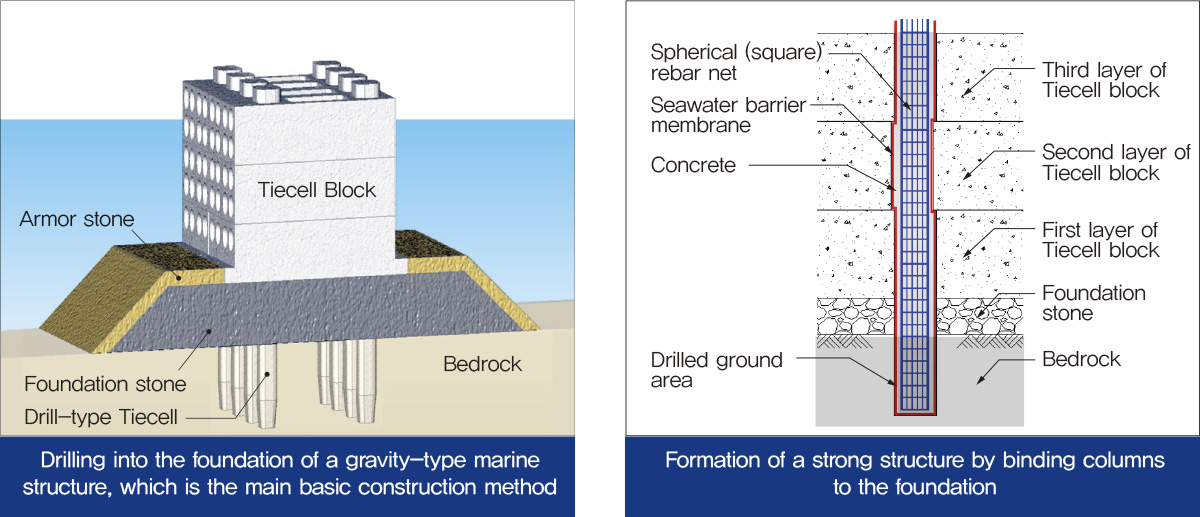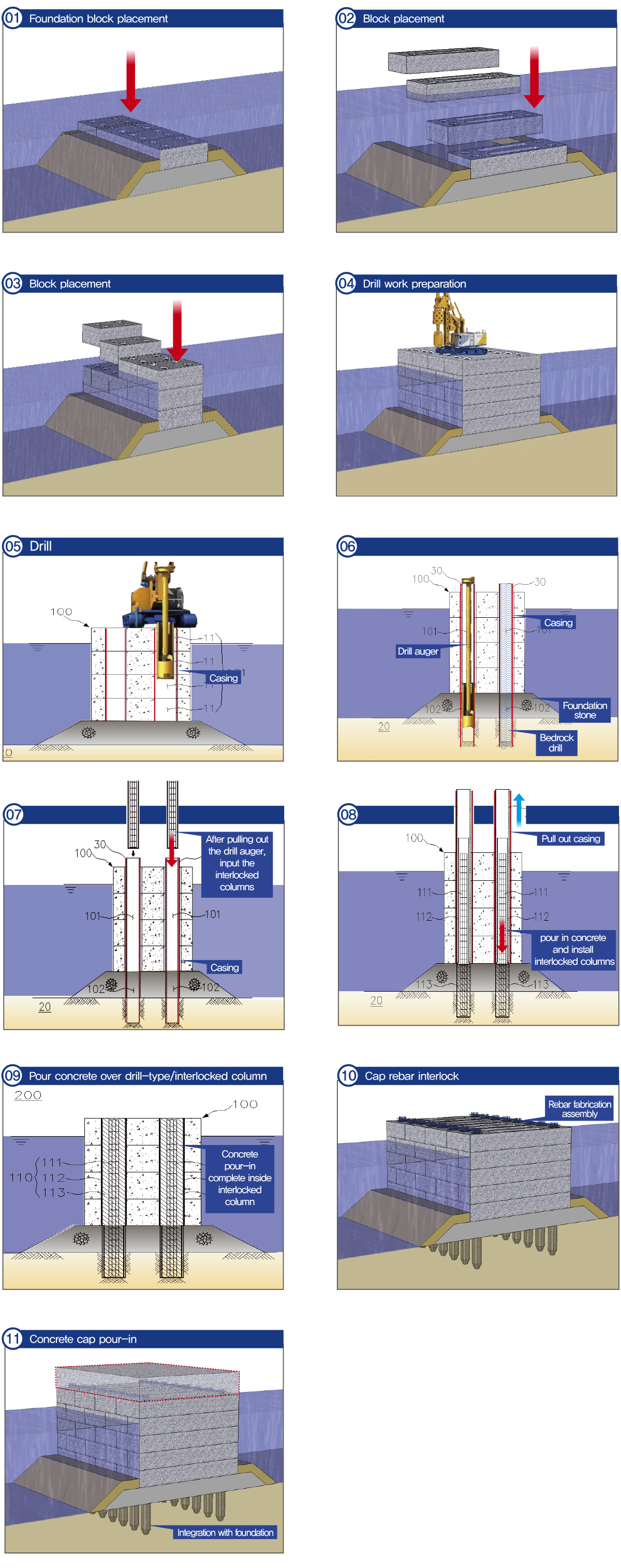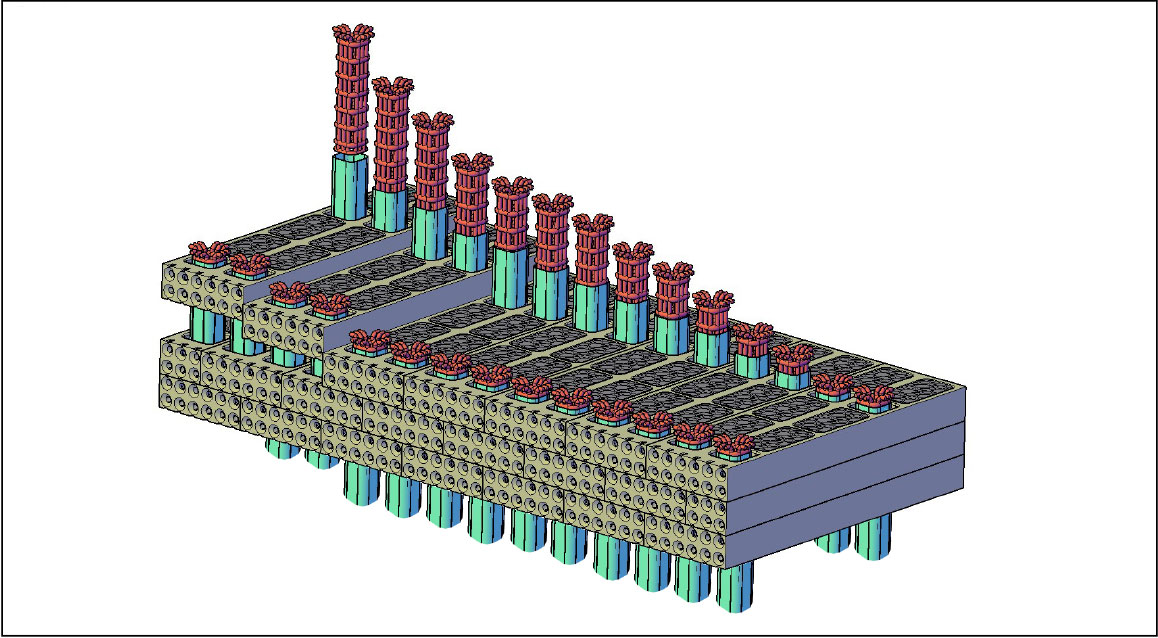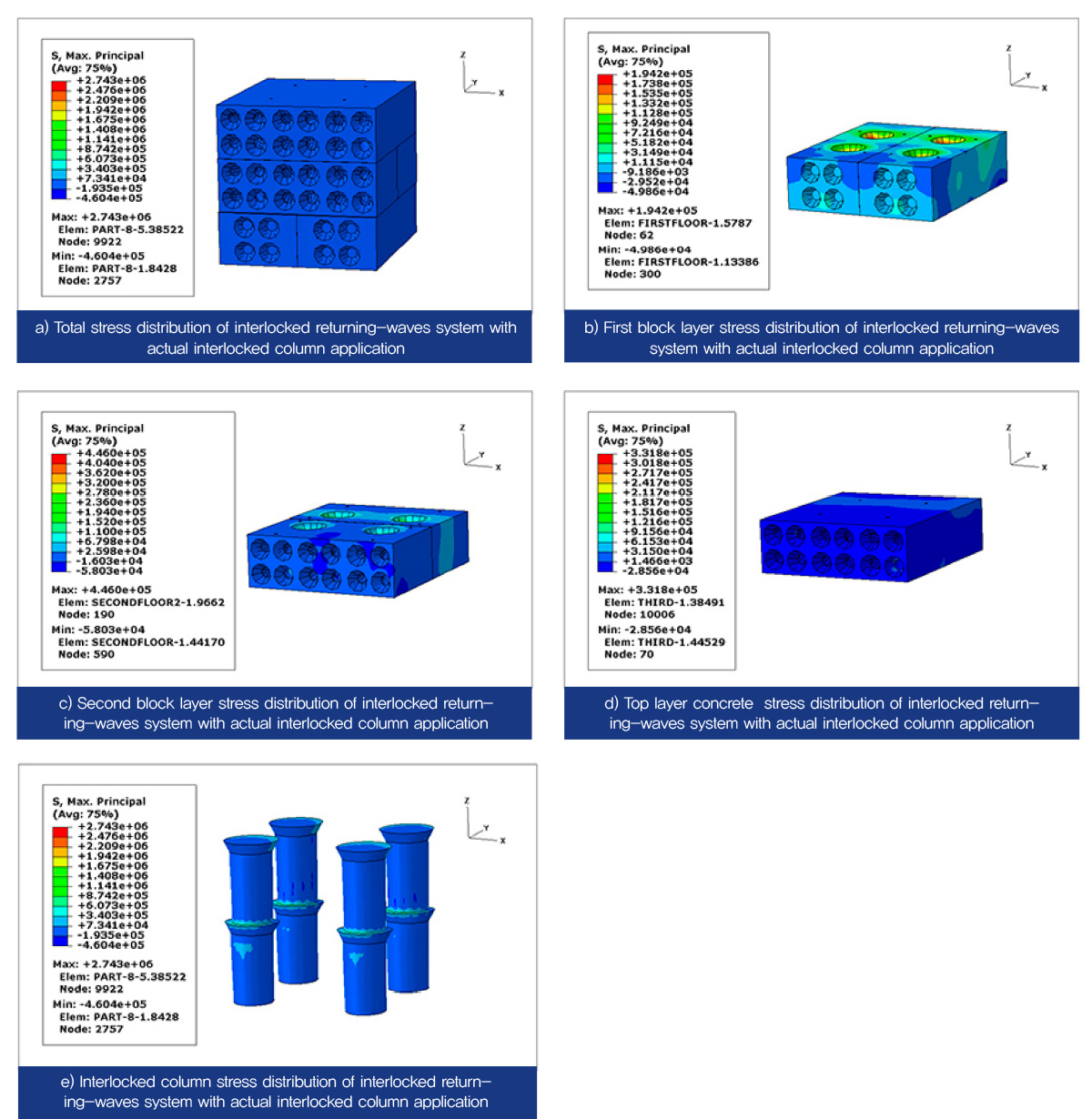01 Operation Principle
- • Integration of the structure by interlocking separated blocks from the top, bottom, left and right underwater while integrating with a firm foundation at the same time
- • Suitable for locations where it is difficult to install caisson blocks
- • Technique applied to Tiecell caisson that can be applied to all marine structures from breakwaters and small fishing ports to large container piers
Reduced cross-section of structure and integration with the foundation

02 Improvement of Efficiency
- • Unlike conventional breakwaters, since each block is interlocked from the top, bottom, left and right sides underwater due to the interlock structure and ensures reliable stability against waves, it enables the implementation of various breakwater shapes
- • There may be minor errors in the production of blocks, and errors may occur because they are mounted in water. The solutions to these errors are as follows
- - The rebar mesh is made 30% smaller than the original lattice holes.
- - When designing the interlocking pipes, the diameter is designed to be 30% larger than the size in the structural review so that there won’t be structural stability problems even if construction error occurs.
- - As shown in the figure, even if an allowable error occurs in the production and installation of the blocks, since the square rebar net is 30% smaller than the lattice holes, there isn’t a problem with embedding.
- - The seawater barrier is installed in close contact with the lattice hole side by lateral pressure to bind the blocks.
Drill-type Tiecell Flow Chart

03 Economics
- • Rebar concrete columns are installed directly into the ground by drilling directly into the bedrock layer.
- • The economic effect is maximized by dramatically miniaturizing the cross section of the existing large caisson
Economic feasibility is secured through the minimization of cross sections and quantity

Caisson method application by manufacturing small blocks and then interlocking them underwater

Efficiency of Tiecell Blocks

04 Structural Stability
- • Stability is secured by examining only the column member force for external forces
- • Friction by the weight of the Tiecell block is not considered
- • Considering the frictional force caused by the weight of the structure, the reduction in construction costs can be even greater











